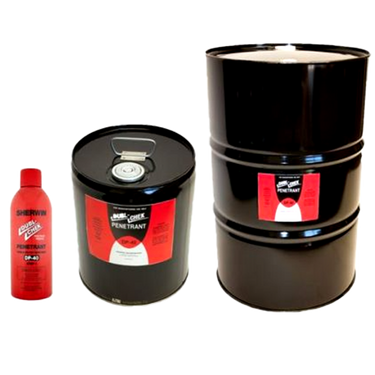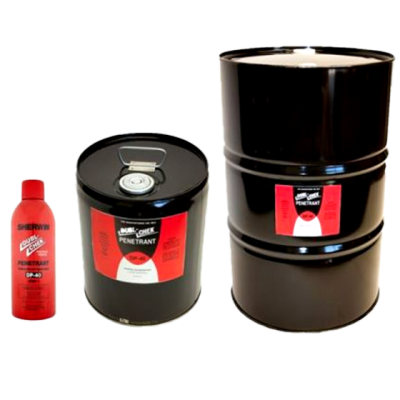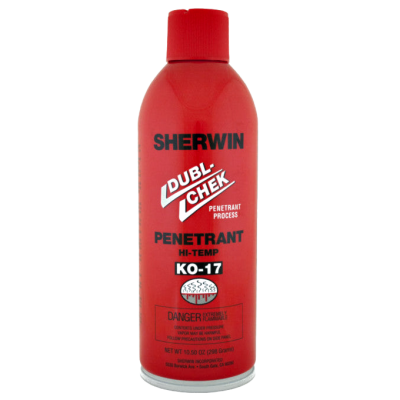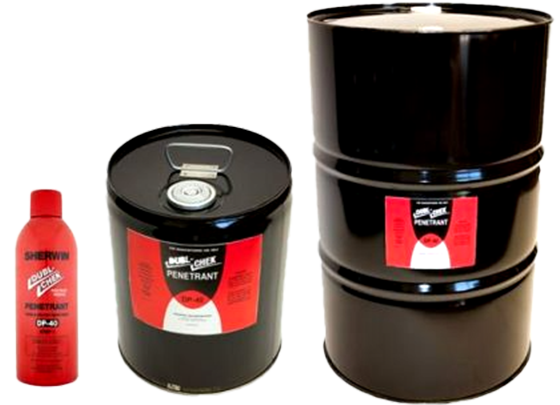| Non-Water Washable |
DP-40 Dye Penetrant (Non-Water Washable): DP-40 is a non-water washable visible penetrant used to locate cracks, laps, pores, lack of bonding, and similar surface flaws. DP-40 can be used on nonporous parts including both ferrous and nonferrous metals, ceramics, and glass. Referred to as the "visible dye penetrant" method or "color contrast" method of inspection for weld inspection.
Technical Data Sheet
|
| Water-Washable |
DP-50 Dye Penetrant (Water-Washable): DP-50 is a water washable visible penetrant used to locate cracks, laps, pores, lack of bonding, and similar surface flaws. DP-50 can be used on nonporous parts including both ferrous and nonferrous metals, ceramics, glass, and some plastics. Referred to as the "visible dye penetrant" method or "color contrast" method of inspection and can be used for weld inspection.
Technical Data Sheet
DP-51 Dye Penetrant (Water-Washable): DP-51 is a water washable visible penetrant used to locate cracks, laps, pores, lack of bonding, and similar surface flaws. DP-51 can be used on nonporous parts including both ferrous and nonferrous metals, ceramics, glass, and some plastics. Referred to as the "visible dye penetrant" method or "color contrast" method of inspection and can be used for weld inspection.
Technical Data Sheet
BY-LUX Penetrant #1 Dual Response Penetrant: BY-LUX is a water washable visible penetrant used to locate cracks, laps, pores, lack of bonding, and similar surface flaws. BY-LUX can be used on insoluble nonporous parts including both ferrous and nonferrous metals, ceramics, glass, and some plastics. Referred to as the "visible dye penetrant" method or "color contrast" method of inspection and can be used for weld inspection.
Technical Data Sheet
|
| Hi-Temp |
KO-17 HI-TEMP* Penetrant: KO-17 hi-temp penetrant is a visible dye penetrant used to find flaws on surfaces at elevated temperatures, up to 3500F (176.70C). KO-17 saves time for weldmet inspection allowing the inspection to take place at pre-heated temperatures. Complies with low sulfur and low halogen requirements. Because KO-17 works at high temperatures, the heat drives contaminants from flaws and heat-expanded flaws trap more penetrant, giving stronger indications.
Technical Data Sheet
|



